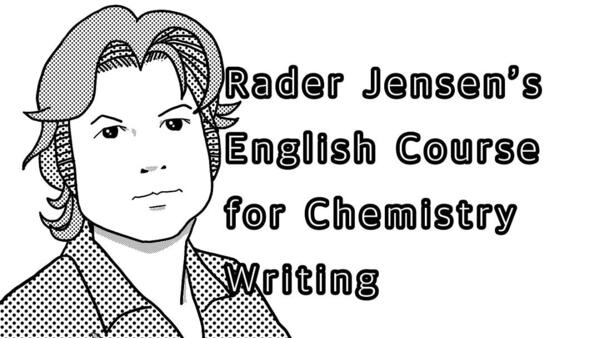CSJ Journals
[化学論文のための英語講座] 第11回:時制のふり返り(論文分解)
(English version is here.)
今度は実際に掲載された以下論文(抜粋)の下線部の時制を意識しながら読んでみましょう。
Although phosphaallenes (a) are essentially highly reactive, we and other groups (b) have succeeded in the synthesis, isolation, and characterization of such as 3-phenyl-1-(2,4,6-tri-t-butylphenyl)-1-phosphaallene (1) so far by using kinetic stabilization with the bulky 2,4,6-tri-t-butylphenyl (hereafter abbreviated to Mes*) group. Recently, we (c) reported on a concise preparation method of phosphaallenes by using 1-bromo-2-(2,4,6-tri-t-butylphenyl)-2-phosphaethenyllithium (2); moreover, we (d) succeeded in regioselective solid state [2+2] dimerizations and the formation of 1,4-diphosphafulvene 3 by the formal [3+2] dimerization of 1. Thus, phosphaallenes (e) are promising compounds for the synthesis of organophosphorus compounds, since allenes (e) have become important for organic synthesis.
Taken from:
S. Ito, S. Sekiguchi, M. Freytag, M. Yoshifuji. Bull. Chem. Soc. Jpn. 2005, 78, 1142-1144
訳文:phosphaallenesは基本的に非常に反応性の高い物質ですが、著者らや他のグループはこれまでに、かさ高い2,4,6-tri-t-butylphenyl基(以下、Mes*と略す)による速度論的安定性を利用して、3-phenyl-1-(2,4,6-tri-t-butylphenyl)-1-phosphaallene (1)などの合成、単離、同定に成功しています。近年、著者らは、1-bromo-2-(2,4,6-tri-t-butylphenyl)-2-phosphaethenyllithium (2)を用いたphosphaallenesの簡便な調製法を報告し、さらに、位置選択的な固体の[2+2]二量化と、1の形式的な[3+2]二量化による1,4-diphosphafulvene 3の生成に成功しました。このように、phosphaallenesは、allenesが有機合成において重要になってきていることから、有機リン化合物の合成に有望な化合物と言えます。
(a) are
phosphaallenesの性質を述べており、reactiveが性質を表しているので、現在形である「are」を使います。
(b) have succeeded
現在完了形「have succeeded」を使っているので、著者らや他のグループが今までに合成、単離、同定などに繰り返し成功したことを述べていると考えられます。
(c) reported
「recently we reported」は一回報告したことを示すので過去形を使います。
(d) succeeded
過去形でも過去完了形でも使えますが、(c)のreportedの時制に合わせて過去形を使っています。
(e) 「phosphaallenes are」は現在形でphosphaallenesが有機リン化合物の合成にとって有望な化合物になった事実を述べ、文の後半では allenes が有機合成にとって重要な存在になったという変化を示すので「have become」という現在完了形を使います。
次回は間違いやすいイディオムについてです。
This time let us read an excerpt from an actually published manuscript, being aware of the tense and time frame of the underlined portions.
Although phosphaallenes (a) are essentially highly reactive, we and other groups (b) have succeeded in the synthesis, isolation, and characterization of such as 3-phenyl-1-(2,4,6-tri-t-butylphenyl)-1-phosphaallene (1) so far by using kinetic stabilization with the bulky 2,4,6-tri-t-butylphenyl (hereafter abbreviated to Mes*) group. Recently, we (c) reported on a concise preparation method of phosphaallenes by using 1-bromo-2-(2,4,6-tri-t-butylphenyl)-2-phosphaethenyllithium (2); moreover, we (d) succeeded in regioselective solid state [2+2] dimerizations and the formation of 1,4-diphosphafulvene 3 by the formal [3+2] dimerization of 1. Thus, phosphaallenes (e) are promising compounds for the synthesis of organophosphorus compounds, since allenes (e) have become important for organic synthesis.
Taken from:
S. Ito, S. Sekiguchi, M. Freytag, M. Yoshifuji. Bull. Chem. Soc. Jpn. 2005, 78, 1142-1144
(a) are
Reactive is an unchanging characteristic ascribed to phosphaallenes, thus the present tense "are" is used.
(b) have succeeded
The present perfect "have succeeded" is used, the authors implying that other groups have up to now successfully synthesized, isolated, and characterized compounds such as (1) repeatedly.
(c) reported
"Recently we reported" shows a single event in the past so the preterit is used.
(d) succeeded
Here either the preterit or the past perfect can be used, but in order to match the tense of (c) "reported", the preterit is used.
(e) "Phosphaallenes are" is present tense showing the reality that they are promising as organophosphorus compounds, and the second half of the sentence uses the present perfect "have become", showing that allenes are now important, but implying that they were perhaps not important in the past. "Have become" shows a change in state.
We will discuss idioms that are easy to make a mistake at next time.
